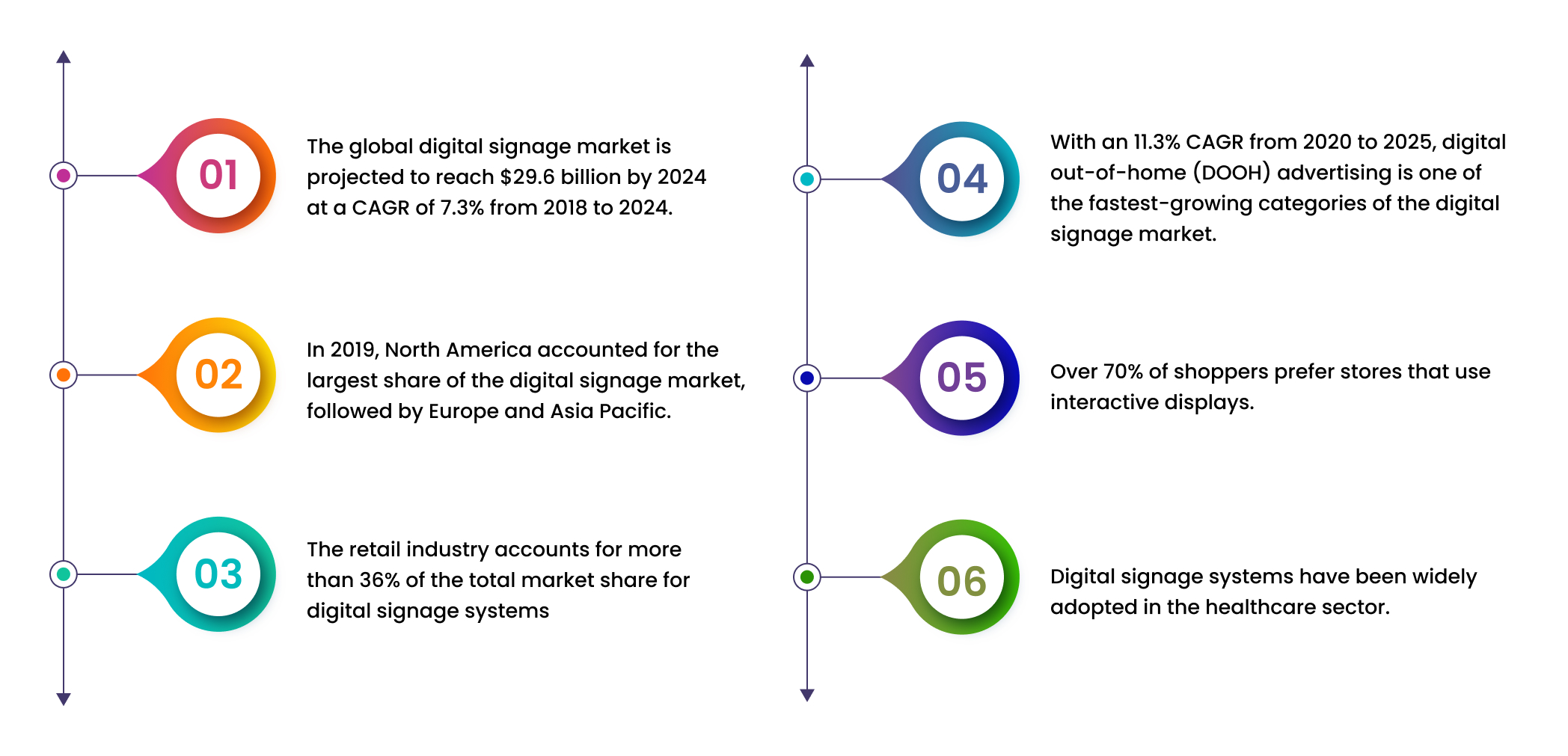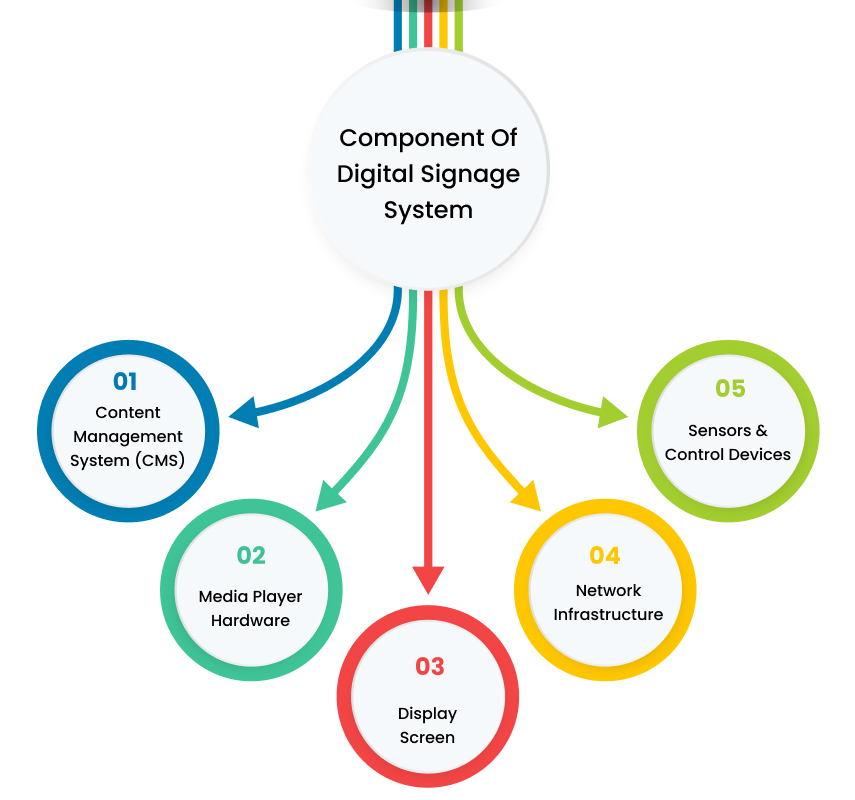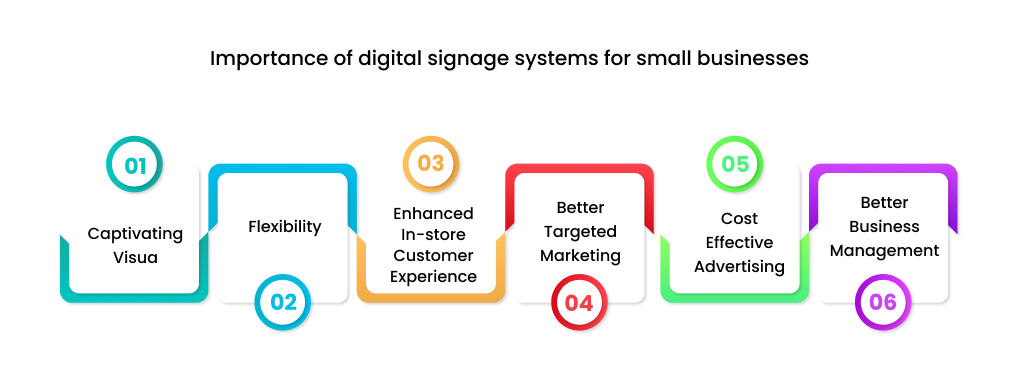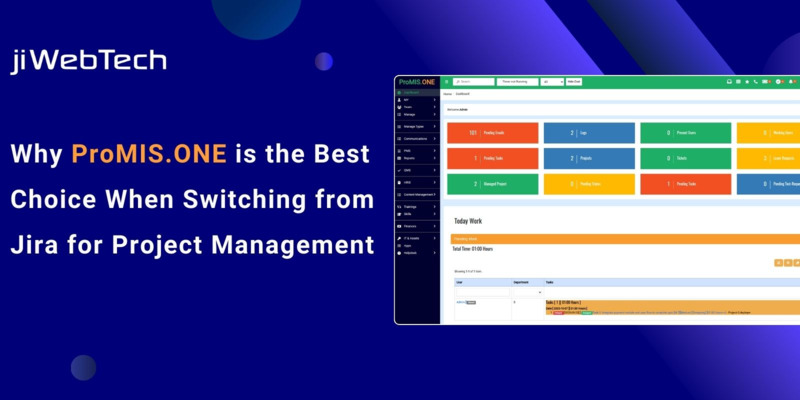- Sep 13, 2024
Share this post on:

In today’s competitive digital world, businesses must discover strategies or new ways to stand out from the competition. One of the ways to stay ahead of the competition is by investing in digital signage systems.
Digital signage systems use digital displays to help businesses engage customers, share information, and promote products or services. These systems are easy to operate and are used immensely by organizations globally. There are a lot of impressive statistics about digital signage statistics. Here are some general statistics on digital signage systems that you may find useful:
- The global digital signage market is projected to reach $29.6 billion by 2024 at a CAGR of 7.3% from 2018 to 2024.
- In 2019, North America accounted for the largest share of the digital signage market, followed by Europe and Asia Pacific.
- The retail industry accounts for more than 36% of the total market share for digital signage systems.
- With an 11.3% CAGR from 2020 to 2025, digital out-of-home (DOOH) advertising is one of the fastest-growing categories of the digital signage market.
- Over 70% of shoppers prefer stores that use interactive displays.
- Digital signage systems have been widely adopted in the healthcare sector.

Component of Digital Signage System
To purchase a digital signage system for your business, you must be wondering what exactly you want. Let us explore the components of digital signage systems.

- Content Management System (CMS): The content management system is a software application that enables users to manage digital assets such as images, videos, and text messages on their digital signage. It is responsible for organizing, scheduling, and storing content in different formats and running playlists.
The CMS can be cloud-based or standalone software. And it allows creating and designing content such as images, videos, PowerPoints, and web pages. Besides, it enables the scheduling of content based on time, day, and location to ensure the delivery of targeted and effective messages.
- Media Player Hardware: Media player hardware is an essential component of a digital signage system. It contains software components that read and display content from the CMS. The media player hardware can be an all-in-one device or a combination of a hardware device and software components.
The player hardware receives content and sends it to the display unit. The media player hardware is connected to the CMS to receive and display the desired output. It can be located remotely connected to the display unit or directly connected to the display screen.
- Display Screen: The display screen is the visual component of digital signage. It is the most noticeable aspect of the system and is responsible for delivering the visual message to the audience. These screens come in different sizes, shapes, and technologies, such as LED, LCD, and projection.
Digital signage displays are designed to operate in a range of environments, from indoor and outdoor settings to high-brightness areas such as retail shops, sports arenas, airports, and city centers.
- Network Infrastructure: The network infrastructure connects all the components of the digital signage system. It is responsible for delivering content from the CMS to the media player hardware and the display screen. The network infrastructure can be wired or wireless and needs to be secure, robust, and reliable.
The infrastructure may include routers, switches, servers, and cabling. But, the type of network infrastructure you need will depend on the content requirements and the environment of deployment.
- Sensors and Control Devices: Sensors and control devices allow digital signage systems to interact with their environment or audience. They send messages to the server, trigger content playback, or change the message on the display when people or objects pass by.
Sensors may include automated lighting control, machine sensors, location-based sensors, and cameras that scan social media engagements. Furthermore, control devices such as touch screens, kiosks, and interactivity promote user engagement, feedback interaction, and information exchange.
Importance of digital signage systems for small businesses
Digital signage systems have become an essential tool for many small businesses. These systems provide a platform for businesses to communicate important information to their customers, such as promotions, advertising, and general information about the business. In this article, we will discuss the importance of digital signage systems for small businesses.

- Captivating Visuals: One of the primary benefits of using digital signage systems is captivating visuals. This technology enables small businesses to showcase their product or service in high-quality visuals, animations, and videos. A well-designed digital display can immediately catch the attention of customers and help businesses increase traffic and enhance their sales.
- Cost-Effective Advertising: Digital signage is an excellent way to advertise without breaking the bank. It is a more affordable advertising medium compared to traditional advertising channels like print, radio, and TV. Small businesses can easily and quickly update their digital signage to promote sales and special promotions, ensuring that it stays relevant and fresh for customers.
- Flexibility: The flexibility of digital signage is another critical benefit. Small business owners can quickly and easily change the content on their screens and adapt to a specific need, event, or occasion. Compared to traditional printed signs, which can be expensive and time-consuming to change, digital signage systems provide more flexibility, which is critical to the success of any small business.
- Enhanced In-Store Customer Experience: In-store digital signage can also enhance the customer experience for small businesses. For example, using digital signage screens to display product information, promotions, and how-to videos can help customers better understand the products and services offered by the company, which can lead to more engagement, loyalty, and increased sales.
- Better Targeted Marketing: Digital signage systems can help small businesses personalize their customers' experience by targeting the right message to the right audience. Digital signage can be configured to display different promotions at different times of the day based on customer demographics or current trends, such as events or special occasions.
- Better Business Management: Digital signage systems allow small business owners to manage their businesses more effectively. For instance, managers can schedule advertising or promotions and track changes in real time, ensuring their messaging is always up-to-date. Also, digital signage systems can provide valuable insights, such as customer traffic patterns or sales trends, enabling businesses to make informed decisions.
Mistakes to avoid while setting up a digital signage system
Digital signage is becoming an essential marketing tool for businesses to communicate their messages effectively to their audience. A digital signage system can help to promote products, provide information and directions, entertain customers, and increase brand awareness.
However, setting up a digital signage system can be complicated, and some mistakes can be costly. In this article, we will outline five common mistakes that organizations often make while setting up a digital signage system and provide tips on how to avoid them.

- Choosing the wrong hardware: Choosing the wrong hardware is perhaps the most significant mistake that businesses make while setting up a digital signage system. Investing in low-quality hardware may end up costing a company more in the long run, as it may not work correctly and require frequent maintenance.
Before buying hardware, businesses need to consider the software specifications that the company intends to use. Look for hardware that is compatible with various software options and future upgrades. If you don't have the necessary expertise, consider consulting an integrator who can guide you and recommend the right hardware for your needs.
- Disregarding or overcrowding content: Creating great content is essential to the success of any digital signage system. It is, therefore, crucial to create content that captures the attention of your audience, promotes your message, and strengthens the brand.
The company should invest in creating quality content tailored to its audience. A common mistake organizations make is to use generic content instead of using content that caters to a specific audience. Hiring a professional content creator can help to improve the quality of content, ensuring that it meets your audience's preferences and generates the desired reaction.
- Failing to plan for network and security: Digital signage systems rely on connectivity, making it critical to have proper network infrastructure in place. Failing to plan for network and security issues can cause significant downtime, leading to customer dissatisfaction and financial losses.
Businesses should prepare for network and security issues from the onset. It's essential to have a reliable and secure network infrastructure in place that can handle throughput capacity requirements.
The business should also look to secure its digital signage systems from malicious attacks by using appropriate security mechanisms such as firewalls and other security applications.
- Not optimizing or scaling your digital signage: Many businesses make the mistake of investing in a digital signage system that cannot scale with company growth. With the growing number of screens needed as the company expands, it is crucial to consider scalability.
It is essential to look for a system that can be readily scaled up or down to meet changing needs. Businesses should also pick software that can handle multiple screens and scale with the business need as it grows.
- Overlooking the importance of maintenance: Maintaining digital signage systems is vital for the systems to function optimally. Not performing maintenance tasks, such as software updates, can cause the system to be unstable, leading to downtime and lost opportunities.
Businesses should create a maintenance plan that outlines when to perform various software and hardware update tasks. This will help ensure the system's stability and significantly reduce system downtime.
To conclude:
Digital signage systems are in high demand. And they will continue to become more advanced and interactive. In the future, they may incorporate new technologies, such as augmented reality and facial recognition, to personalize content for viewers. As digital signage technology becomes more affordable and accessible, it is also likely that will become more prevalent in public spaces and retail establishments.
So, if you are looking for services that can offer you the most robust digital signage solution, jiWebTech Digital Signage Solution is the perfect choice.
















